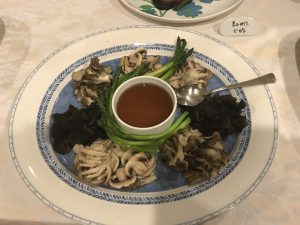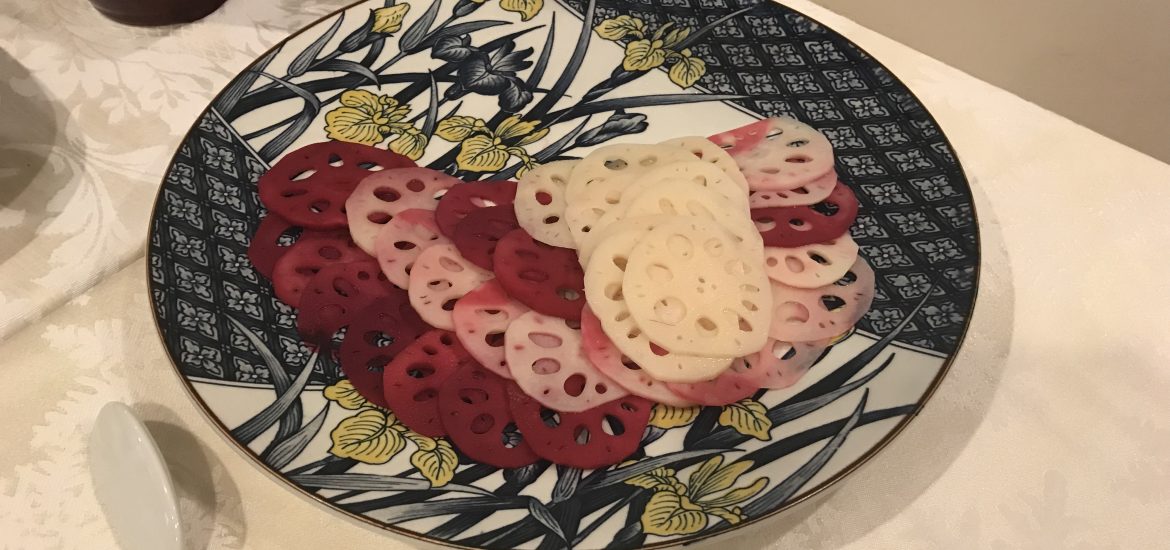Read my article about Korean food history in Greenwood Food Cultures of The World Encyclopedia here. I discuss the importance of pickling and fermenting for food security.


Pickles and fermented foods also contribute to the aesthetics of the Korean table and unique flavors of Korean dishes. The Korean Peninsula has four distinct seasons. The Korean table represents the colors and flavors of the earth throughout the seasons. Body and earth are one. Food is medicine. Food is delicious and visually appealing medicine. According to an old proverb, “If it looks good, it tastes good”.
Many Korean dishes tend to highlight a single ingredient. For example, carrot muchim (salad) is simply seasoned carrots. Even when a dish has multiple components, such as bibimbap (rice mixed with vegetables), each component is usually cooked separately. Ingredients are cooked individually for texture, color, and flavor.
The act of mixing a variety of ingredients in a single dish such as bibimbap or guljeolpan (9 varieties dish) is an act of harmonization and eating is an act of reconciliation. Each ingredient remains distinct while informing the whole.
Time is an ingredient in Korean cooking. My mother has a homemade batch of soy sauce (guk Kansans) that’s over 40 years old. She uses it for special occasions. She seasoned seaweed soup with it when each of her 6 grandchildren were born. She claims it mellows and becomes more complex with age.
When slow food is measured in decades, the act of waiting becomes an aesthetic experience. Time becomes an heirloom.
Besides Korean cuisine, I’m trained in French cuisine and a champion eater. Here. I’m tempted to compare the role of pickles and fermented foods in Korean cuisine to wine and cheese in French cuisine. The stinkiest of French cheeses is as pungent as fermented soy beans. Almost every food culture has a funky or foisty flavors, i.e. controlled rot.
Wine with meals is like pickles with meals. Consider that wine tasting notes such as “floral, herbaceous, grassy, orchard fruits, berries, astringent, yeasty, smoky, spicy, briney, or mineral flavors” apply to pickles and ferments.
